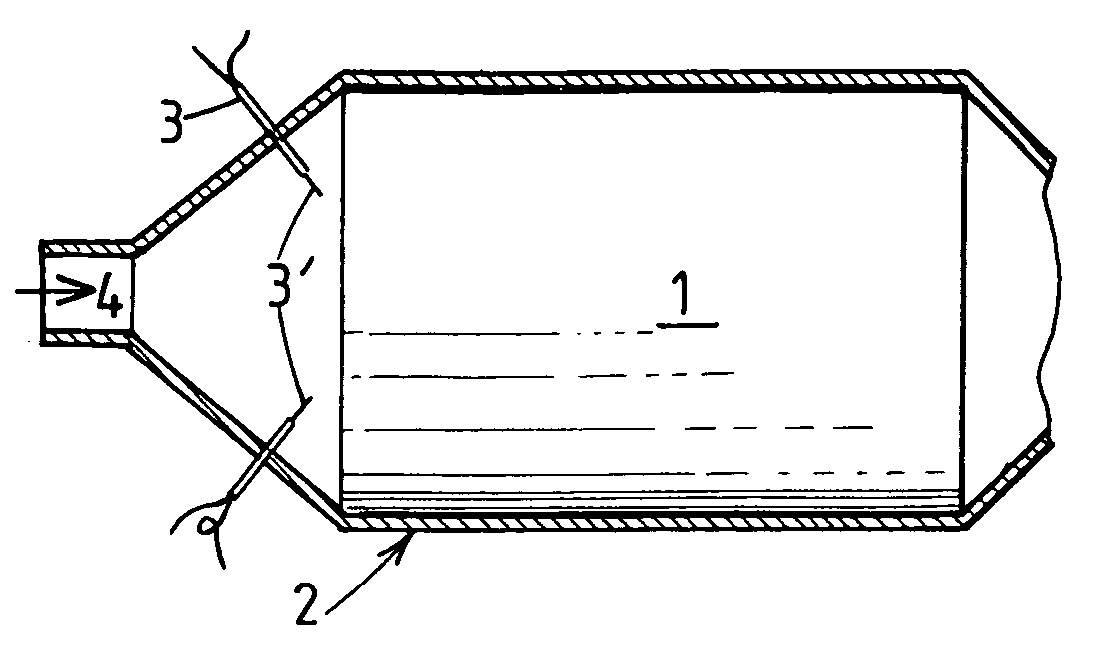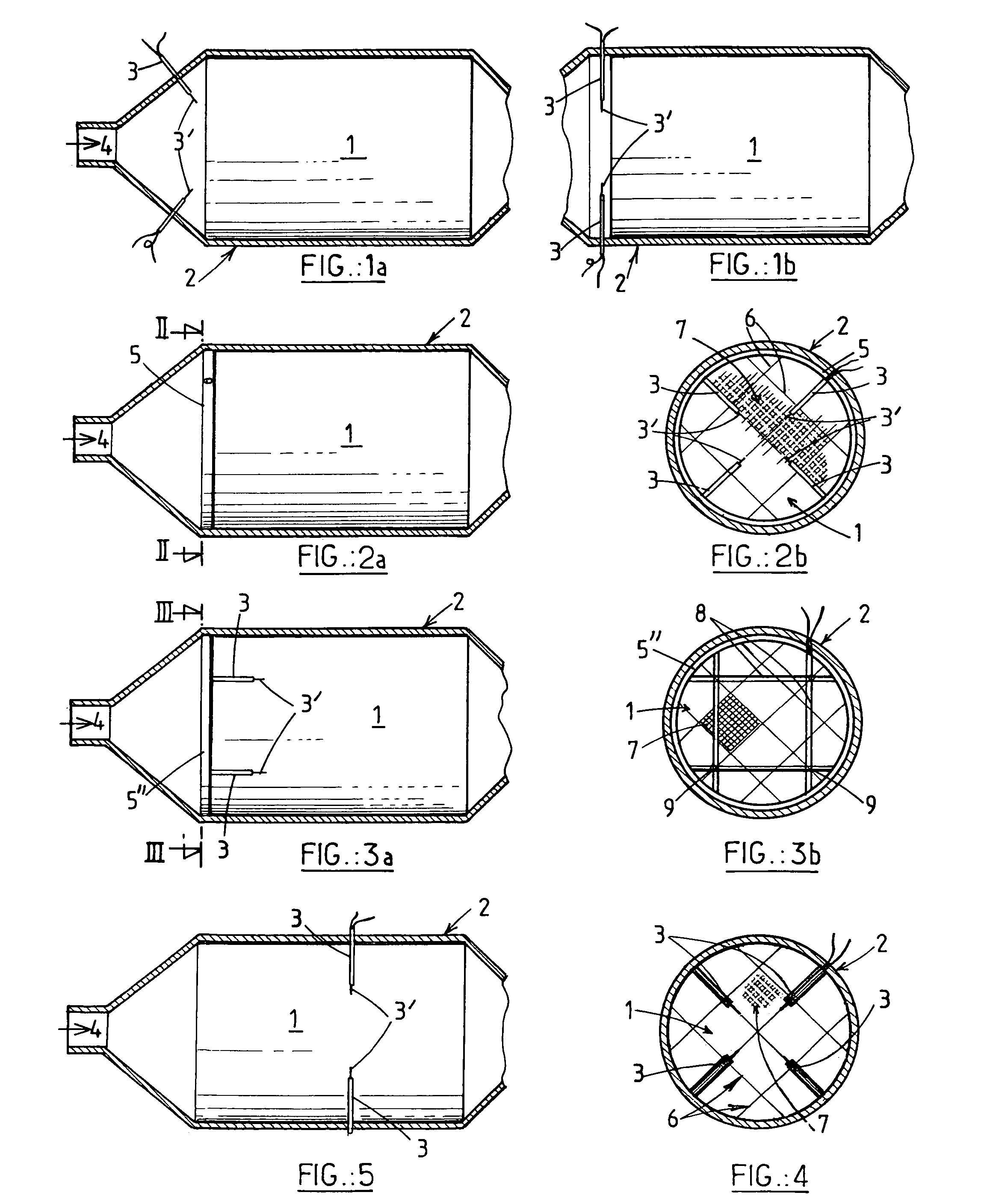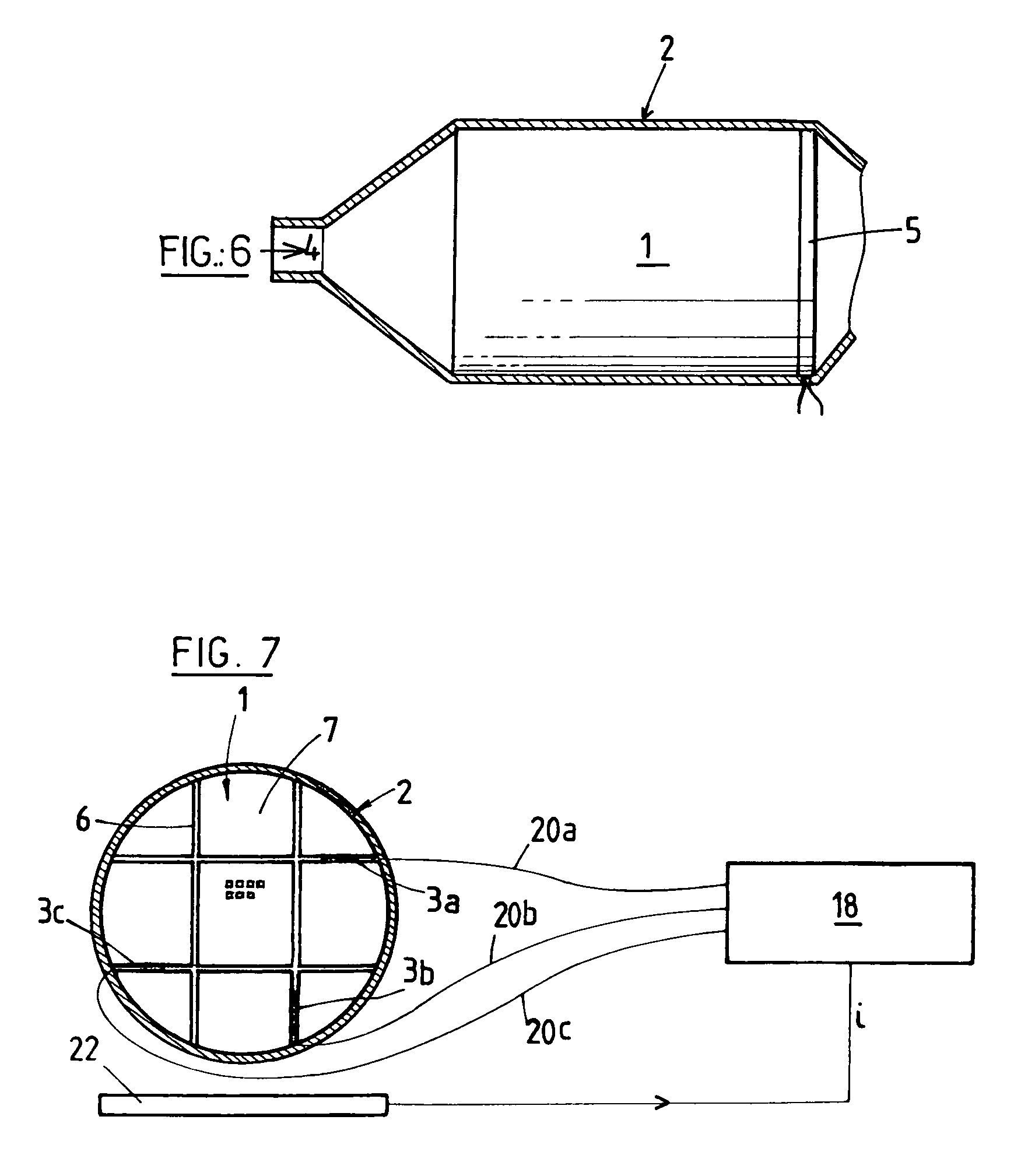Particulate filter for purifying exhaust gases of internal combustion engines comprising hot spot ceramic ignitors
a technology of ceramic ignitors and filter bodies, which is applied in the direction of filtration separation, auxillary pretreatment, separation processes, etc., can solve the problems of increasing the head loss due to the filter body, reducing the performance of the engine, and various techniques have been developed. , to achieve the effect of preventing the propagation of combustion, short response time and high dependence on engine operating conditions
- Summary
- Abstract
- Description
- Claims
- Application Information
AI Technical Summary
Benefits of technology
Problems solved by technology
Method used
Image
Examples
Embodiment Construction
[0034]FIGS. 1a and 1b show a filter comprising a filter body 1 accommodated in a metal casing 2. The filter body 1 is constructed of blocks bonded together and pierced by many passages, as shown more clearly in FIG. 2b. Exhaust gases arrive via an inlet 4. In the two embodiments shown, four hot spot ceramic ignitors 3 (of which only two can be seen in FIGS. 1a and 1b) pass through the metal casing 2. They are positioned in pairs in orthogonal planes and either obliquely to the longitudinal axis of the filter (FIG. 1a) or perpendicularly to that axis (FIG. 1b), so that the hot spot 3′ of each ignitor is in the immediate vicinity of the upstream face of the filter body. Thus the heat emitted and the radiation ignite the soot and initiate its combustion by propagating into all of the filter body.
[0035]FIGS. 2a and 2b show an embodiment in which ignitors are carried by a ring 5 disposed in the metal casing 2 immediately in front of the filter body 1. To position the ring very accurately...
PUM
| Property | Measurement | Unit |
|---|---|---|
| self-ignition temperature | aaaaa | aaaaa |
| temperature | aaaaa | aaaaa |
| self-ignition temperature | aaaaa | aaaaa |
Abstract
Description
Claims
Application Information
 Login to View More
Login to View More - R&D
- Intellectual Property
- Life Sciences
- Materials
- Tech Scout
- Unparalleled Data Quality
- Higher Quality Content
- 60% Fewer Hallucinations
Browse by: Latest US Patents, China's latest patents, Technical Efficacy Thesaurus, Application Domain, Technology Topic, Popular Technical Reports.
© 2025 PatSnap. All rights reserved.Legal|Privacy policy|Modern Slavery Act Transparency Statement|Sitemap|About US| Contact US: help@patsnap.com



